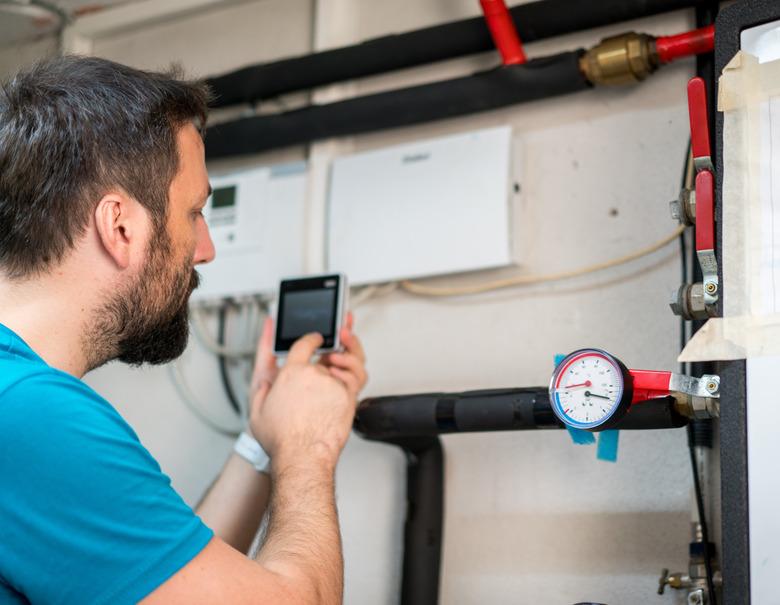How To Set The Pressure For A Water Bladder Tank
A pressure tank for a well is a necessity for any home that uses well water. In a typical setup, a shallow- or deep-well pump transfers groundwater to a holding tank. From there the water passes into the pressure tank, which is a second holding tank connected to a jet pump that keeps the water pressurized. Water is incompressible, so the tank must contain some air. In some tanks, there is no barrier between the air and water, which means the tank must be charged periodically. A more efficient design is to provide a flexible bladder in the tank to contain the air in a closed compartment. This helps maintain stable well pressure tank psi.
Bladder tanks come precharged and ideally never need recharging. In reality, however, small leaks can cause the air pressure in the tank to decrease to the point at which the pump has to overwork to maintain water pressure. The pump may cycle on more frequently and stay on longer than it should. You can manually charge the tank yourself using a car tire inflator or even a bike pump.
What Are Ideal Well Pressure Tank Settings?
The jet pump has an adjustable on-off switch that is programed to turn the pump on when the pressure falls to its cut-in value and to turn it off when the pressure reaches the cut-out value. A typical cut-in/cut-out range is between 30 and 50 psi, but not all systems are the same. Some pumps may be set higher to guarantee adequate pressure in an extensive network of pipes. To determine the cut-in value of your system, turn on a faucet in the house, watch the pressure gauge on the jet pump and note the reading when the pump starts.
The pressure in the pressure tank should be 2 psi less than the cut-in pressure for the pump. For example, if the pump cut-in pressure is 30 psi, the tank bladder pressure should be 28 psi.
Procedure for Setting Well Bladder Pressure
Every pressure tank has an air valve similar to the one on a car or bicycle tire. You can test the bladder pressure by unscrewing the valve cap and using the same pressure tester you use to test the air in your tires. If the pressure has fallen, you can use a conventional compressor, a tire inflator or a manual pump to add more air.
To do this, you need to bleed the water. Turn off power to the jet pump, open a faucet and let water flow until the pressure reading on the pump gauge is zero. Pump air into the valve, continually checking with a gauge to make sure you don't overfill the bladder and rupture it. If you add too much air, simply depress the valve stem with your thumbnail to let some air out. Once the pressure is restored, close the faucet and turn on the pump.
Leaks and Waterlogs
If you have to restore the well bladder pressure, it's because air has a way of leaking out. The most common leakage point is the valve itself. Spray some soapy water on it and look for bubbles. If you see any, the valve needs to be tightened or replaced.
If the bladder itself ruptures or stiffens due to an accumulation of minerals, the pump will have to work extra hard to maintain pressure. It will cycle on and off repeatedly, and you'll probably notice insufficient water pressure in the plumbing. This condition is known as waterlogging and usually means the tank needs to be replaced.
